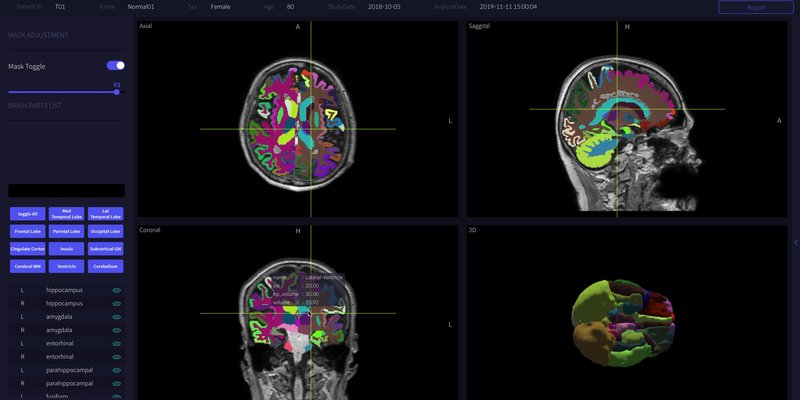
Company: Vuno Product: VUNO Med-DeepBrain
Impact of white matter hyperintensity volumes estimated by automated methods using deep learning on stroke outcomes in small vessel occlusion stroke
Frontiers in Aging Neuroscience, 2024
Abstract
Introduction
Although white matter hyperintensity (WMH) shares similar vascular risk and pathology with small vessel occlusion (SVO) stroke, there were few studies to evaluate the impact of the burden of WMH volume on early and delayed stroke outcomes in SVO stroke.
Materials and methods
Using a multicenter registry database, we enrolled SVO stroke patients between August 2013 and November 2022. The WMH volume was estimated by automated methods using deep learning (VUNO Med-DeepBrain, Seoul, South Korea), which was a commercially available segmentation model. After propensity score matching (PSM), we evaluated the impact of WMH volume on early neurological deterioration (END) and poor functional outcomes at 3-month modified Ranking Scale (mRS), defined as mRS score >2 at 3 months, after an SVO stroke.
Results
Among 1,718 SVO stroke cases, the prevalence of subjects with severe WMH (Fazekas score ≥ 3) was 68.9%. After PSM, END and poor functional outcomes at 3-month mRS (mRS > 2) were higher in the severe WMH group (END: 6.9 vs. 13.5%, p < 0.001; 3-month mRS > 2: 11.4 vs. 24.7%, p < 0.001). The logistic regression analysis using the PSM cohort showed that total WMH volume increased the risk of END [odd ratio [OR], 95% confidence interval [CI]; 1.01, 1.00–1.02, p = 0.048] and 3-month mRS > 2 (OR, 95% CI; 1.02, 1.01–1.03, p < 0.001). Deep WMH was associated with both END and 3-month mRS > 2, but periventricular WMH was associated with 3-month mRS > 2 only.
Conclusion
This study used automated methods using a deep learning segmentation model to assess the impact of WMH burden on outcomes in SVO stroke. Our findings emphasize the significance of WMH burden in SVO stroke prognosis, encouraging tailored interventions for better patient care.
Read full study